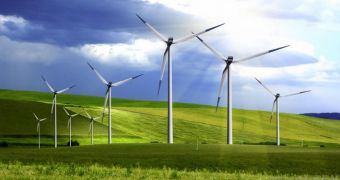As useful as they might be when it comes to helping human society improve on its ecological footprint, wind farms still get quite a lot of bad publicity. Thus, there are some who say that such facilities are guilty of killing dozens of birds, and must, therefore, be viewed as a threat to wildlife.
However, according to a recent article on Eco Watch, wind turbines are not at all as bad as some people think them to be. On the contrary, the article in question, authored by Elliott Negin with the Union of Concerned Scientists, argues that wind farms in the United States kill surprisingly few birds.
Elliott Negin explains that, as shown by several studies, birds in said country should be more afraid of buildings, power lines, communications towers, and the like than they should be of wind turbines.
Specifically, the researcher explains that, according to a paper published in the Wilson Journal or Ornithology back in 2013, buildings in the United States have about 970 million birds crash into them on a yearly basis. Power lines, on the other hand, need be linked to 175 million bird deaths annually.
As far as misapplied pesticides, communications towers, and oil and gas industry fluid waste pits are concerned, the specialist says that these have been documented to kill 72 million, 6.6 million, and 1 million birds annually, respectively.
By comparison, wind turbines up and running across the United States' territory have been shown to cause somewhere between 140,000 – 328,000 birds deaths yearly. Granted, this number is not to be ignored. Still, it is not nearly as impressive as the ones documented for buildings and power lines.
Elliott Negin also stresses the fact that, for years now, the country's Fish and Wildlife Service has been working closely with wind farm developers, and with conservation and science groups to ensure that wind farms that are built across the country are designed and installed in such a way that they cause minimal harm to birds and their habitats.
What's more, the specialist argues that, all things considered, the changes brought about by global warming and climate change are bound to upset the United States bird population far more than wind turbines do and ever will. Habitat loss, invasive species and pollution are other things that people should be more preoccupied with.
To put things into perspective, it must be said that, at the end of 2013, wind turbines up and running in the United States were producing enough electricity to meet the demand of as many as 15.5 million typical households. It is estimated that this green energy output translated into annual carbon emissions savings of 96 million metric tons.

 14 DAY TRIAL //
14 DAY TRIAL //